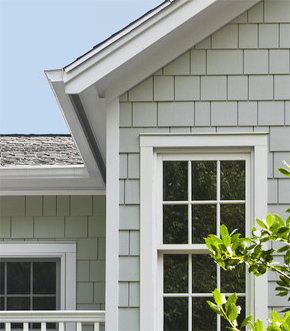
The Art of Home Maintenance: Regular Checks to Ensure Longevity
Homeownership is a significant milestone in one’s life, often accompanied by feelings of accomplishment and pride. However, it also comes with the responsibility of maintaining and caring for one’s investment. Regular home maintenance isn’t just about keeping your living space looking pristine; it’s about preserving its value and ensuring a safe, comfortable environment for your family.
The Importance of Regular Home Maintenance
Owning a home is more than just having a roof over your head; it’s a long-term investment that requires constant care and attention. Maintenance isn’t just a task to be ticked off the list; it’s a commitment to preserving the essence and value of your home. Let’s explore why regular home maintenance is paramount.
1. Preserving Home Aesthetics and Character:
Your home is an extension of your personality, reflecting your tastes and preferences. Regular maintenance ensures that your house continues to shine, looking as good as the day you first bought or built it. From a freshly mowed lawn to newly painted walls, these small tasks play a significant role in maintaining the aesthetics and character of your home.
2. Safety and Health:
Routine checks and repairs go beyond just maintaining the look of your home; they are crucial for the health and safety of its occupants. For instance, mold due to damp conditions can lead to respiratory issues. Similarly, faulty wiring can pose a fire hazard. Regular maintenance ensures that your home remains a safe haven.
3. Efficient Energy Use:
Regularly servicing and upgrading home systems, such as heating or insulation, can lead to significant energy savings. Well-maintained homes tend to be more energy-efficient, resulting in reduced utility bills and a smaller carbon footprint.
4. Longevity of Home Systems:
Home systems, whether it’s the HVAC or plumbing, have a definite lifespan. Regular maintenance not only ensures that they function at their optimum but can also prolong their lifespan, giving homeowners better value for their investment.
5. Preventing Small Issues from Becoming Big Problems:
Regular checks help in early detection of potential problems. Addressing these issues promptly can prevent them from snowballing into larger, more expensive problems in the future. For instance, a simple re-caulking can prevent extensive water damage.
6. Cost Savings:
While some might view regular maintenance as an added expense, it’s an investment that pays off in the long run. Addressing issues promptly can often lead to cheaper repairs than waiting for a complete breakdown or significant damage.
7. Enhancing Property Value:
Regular home maintenance has a direct impact on the property’s market value. Well-maintained homes not only fetch a better price but also tend to sell faster than those that have been neglected.
8. Peace of Mind:
Knowing that your home is well-taken care of provides a sense of security and peace. You can rest easy knowing that your living space is in top shape, both aesthetically and functionally.
9. Preparing for the Seasons:
Regular maintenance helps in preparing your home for different seasons. Whether it’s ensuring the heating system is ready for winter or checking the roof before the rainy season, these checks ensure your home remains comfortable and damage-free throughout the year.
10. Building a Maintenance Culture:
Regular maintenance instills a culture of care and responsibility. Over time, these tasks become a habit rather than a chore, ensuring that future generations also understand the importance of taking care of their living spaces.

Keeping the Value of Your Property High:
Like any other asset, a home can depreciate in value if not well-maintained. Regular checks and repairs ensure the structural integrity of the house and keep everything running smoothly, thereby contributing to its market value.
Avoiding Bigger Repair Costs in the Long Run
Addressing small issues before they escalate into major problems can save homeowners a significant amount of money and stress. It’s always more cost-effective to prevent than to repair.
Enhancing Living Comfort:
A well-maintained home offers a comfortable and safe living environment. This includes having efficient heating during winter, proper ventilation during summer, and ensuring all facilities are functioning optimally.
Roof and Attic Checks
The roof, being the primary shield against external elements, requires consistent monitoring. Homeowners should look out for damaged or missing shingles, signs of leaks, or moss growth. Additionally, the attic plays a crucial role in a home’s insulation. Ensuring it has the right insulation thickness and is free from pests or dampness can prevent structural damages and promote energy efficiency.
The roof and attic are often out of sight and, as a result, out of mind. However, these crucial areas act as the protective shield of your home, ensuring you stay warm, dry, and safe. Understanding the risks associated with neglecting these areas can emphasize the importance of their regular maintenance.
The Protective Barrier
The primary role of a roof is to act as a barrier between the external environment and your home’s interior. It shields your house from rain, snow, wind, and other elements. An unmaintained roof can develop issues like leaks, which not only damage the roof structure but can also cause extensive damage to the interiors of your home.

1. Risks of Water Damage:
One of the most apparent risks of neglecting roof maintenance is water damage. Leaks can lead to the growth of mold and mildew, which can jeopardize the health of the home’s occupants. Moreover, persistent water intrusion can damage the home’s structure, including the walls, ceilings, and even the foundation.
2. Insulation Compromise:
The attic is typically packed with insulation material, ensuring your home remains warm in the winter and cool during the summer. Water leaks or the intrusion of pests can damage this insulation, reducing its effectiveness. This not only affects the comfort of your home but can also lead to increased energy bills.
3. Pest Infestations:
A poorly maintained roof or attic can become a haven for pests like rodents, birds, and insects. Once they find a way in, these pests can damage the structure, chew through wires, contaminate insulation, and even spread diseases.
4. Reduced Roof Lifespan:
Roofs are designed to last for several years, but neglecting regular checks and maintenance can considerably shorten this lifespan. Small issues, if left unattended, can lead to substantial damages requiring a complete roof replacement sooner than anticipated.
5. Aesthetic Decline:
Over time, roofs can gather debris, moss, and algae. Not only does this diminish the aesthetic appeal of your home, but it can also cause damage to the shingles and tiles, leading to more frequent repairs or replacements.
6. Increase in Repair Costs:
Routine checks can help in identifying and addressing minor issues. Neglecting these can lead to major damages that are not only more complex to fix but also more expensive.
7. Safety Concerns:
A damaged roof can lead to falling debris, posing a direct threat to the inhabitants’ safety. Moreover, compromised structural integrity can make the home more susceptible to weather-related damages, such as during a storm.
8. Decline in Property Value:
A well-maintained roof is often one of the first things prospective buyers or property evaluators notice. A neglected roof can considerably reduce the market value of the property.
The roof and attic are more than just structural elements of a house. They are integral to the home’s health, safety, and efficiency. Regular checks and timely maintenance can prevent potential problems, ensuring that the protective shield remains strong and effective for years to come.

Gutter Cleaning
Gutters play a pivotal role in directing rainwater away from the house. Over time, they can get clogged with leaves, twigs, and debris. Cleaning gutters regularly prevents water damage, which can be detrimental to the house’s foundation and overall structure.
Risks of Neglecting Gutter Maintenance
If not maintained properly, gutters can lead to a slew of issues. Here are some risks associated with neglecting gutter maintenance:
Foundation Damage:
When gutters are clogged or damaged, they can overflow, causing water to pool around your home’s foundation. Over time, this can lead to cracks in the foundation, which can be expensive to repair and compromise the structural integrity of the house.
Landscape Destruction:
Overflowing water can erode the soil around your home, leading to destroyed gardens and washed-out landscaping features. This can not only reduce the aesthetic appeal of your outdoor space but can also entail significant costs to restore.
Basement Flooding:
Misdirected rainwater due to malfunctioning gutters can lead to basement flooding. The damp environment can further become a breeding ground for mold and mildew, presenting health risks to the home’s occupants.
Roof and Wall Damage:
When water doesn’t flow freely through the gutters, it can back up onto the roof, leading to rot in the roofing materials. This can also seep into the walls, causing internal damage, peeling paint, and growth of mold.
Pest Infestation:
Stagnant water in clogged gutters can attract pests such as mosquitoes, rodents, and birds. These pests can bring diseases, damage your home’s structure, and create unnecessary nuisances.
Decreased Home Value:
Unmaintained gutters can lead to visible damage to the exterior of the home, including stained or damaged siding material or eroded landscaping. These damages can decrease your home’s curb appeal and reduce its market value.
Increased Repair Costs:
Like any other part of your home, minor gutter issues can escalate into major problems if not addressed promptly. Regular maintenance checks can prevent large-scale damages and save on hefty repair or replacement costs down the line.
While gutters might seem like a minor feature of your home, they hold a significant responsibility. Regular cleaning and maintenance of your gutter system can prevent these risks, ensuring the longevity and health of your home.

Foundation and Basement Inspections
The foundation is the bedrock of the home. Any signs of cracks or shifts can lead to significant structural problems in the future. Basements, on the other hand, are prone to water leakage. Regular checks can prevent the onset of mold and structural damage. It’s also crucial to ensure that sump pumps are working efficiently, especially during rainy seasons.
Plumbing and Electrical Systems
Water leaks or pipe corrosion can lead to both structural damage and inflated water bills. Therefore, it’s crucial to check faucets, toilets, and pipes regularly. On the electrical side, outdated or frayed wiring is not just inefficient; it’s a fire hazard. It’s advisable to have periodic checks by professionals to ensure all is in order.
Heating and Cooling System Maintenance
To maintain optimal indoor temperature, it’s vital to change filters regularly and ensure vents aren’t obstructed. This not only ensures efficient heating and cooling but also prolongs the lifespan of the systems.
Window and Door Seals
Drafty windows or doors increase energy bills. Checking for drafts and re-caulking or adding weather stripping where necessary can enhance energy efficiency and comfort.
Pest Inspections
Nobody wants uninvited guests! Regular checks, especially in attics and basements, can prevent infestations. Sealing any potential entry points and ensuring your home is not a conducive environment for pests is key.
Outdoor Landscaping
Trees close to the house should be trimmed to prevent potential damage during storms. It’s also essential to ensure plants near the foundation do not cause any harm or obstruction.
Home Safety Checks
Safety first! Smoke and carbon monoxide detectors should be tested regularly to ensure they’re functional. Similarly, fire extinguishers should be checked and replaced as necessary.

Sustainability and Home Longevity
It’s no longer just about maintaining your home for its lifespan but ensuring it aligns with the evolving understanding of sustainable living. Adopting sustainable practices not only contributes to the planet’s health but also increases your home’s longevity.
Eco-Friendly Building Materials:
More homeowners are recognizing the benefits of using sustainable materials. These materials, often sourced responsibly or recycled, are designed to be durable and lessen the environmental impact. From bamboo flooring to recycled steel beams, the options are both green and long-lasting.
Harness Natural Energy:
Solar panels are becoming increasingly commonplace. These panels reduce dependence on non-renewable energy sources, decreasing your home’s carbon footprint. Moreover, they come with the added benefit of reducing monthly energy bills. While the initial investment can be substantial, the long-term savings, both monetary and environmental, are profound.
Rainwater Harvesting Systems:
By collecting and storing rainwater, you can reduce your dependence on municipal water. This stored water can be used for landscaping, flushing toilets, and, with proper treatment, even as drinking water. These systems not only conserve water but can also prevent potential water damage from unchecked rainwater runoff.
Green Roofs and Walls:
Green or ‘living’ roofs and walls, adorned with plants, offer insulation, absorb rainwater, and provide habitats for wildlife. They act as an additional layer of insulation, reducing energy costs.
Low-VOC Paints:
Volatile Organic Compounds (VOCs) are harmful chemicals found in traditional paints. They contribute to indoor air pollution and can have adverse health effects. Low-VOC paints are better for both the environment and the home’s inhabitants, and they are durable and long-lasting.
Upcycling and Reusing:
Instead of discarding old furniture or home fixtures, consider upcycling them. With a touch of creativity, an old item can be transformed into something unique and functional, giving it a new lease on life.

Your home is an ongoing project, a canvas that reflects the changes and evolutions of your life and the world around you. The trends toward sustainability and the focus on longevity are intertwined, aiming at creating homes that not only last but also have a reduced ecological impact. Every choice, from the materials you choose to the energy you harness, adds to the legacy of your home. This legacy is one of resilience, respect for the environment, and a commitment to a future where homes harmoniously blend with the world around them.
Warning Signs Your Home May Need Maintenance
Every home, no matter how new or well-built, will require maintenance at some point. Often, our homes give us subtle (and sometimes not-so-subtle) signals that something needs attention. Recognizing these warning signs early can save homeowners time, money, and potential headaches. Here’s what to watch out for:
Cracks in the Walls or Foundation:
While small hairline cracks can be a regular result of a house settling, larger cracks or those that grow over time can be an indication of structural problems. If you notice widening cracks, especially around doorframes or windows, it may be time to consult a professional.
Uneven Floors:
Floors that begin to slope or feel uneven underfoot can be a sign of foundation issues or water damage beneath the flooring.
Persistent Musty Odors:
A consistent musty smell, especially in basements or bathrooms, can indicate mold or mildew growth. This is not only a structural concern but can also pose health risks.
Water Stains on Ceilings or Walls:
Even if it’s not currently raining, old water stains can suggest there was a leak at some point. It’s essential to determine the source and ensure it’s been addressed.
Increased Energy Bills:
A sudden spike in your energy bills without a clear reason (like increased rates or usage) can be a sign that something in the home, such as HVAC systems, insulation, or windows, isn’t operating efficiently.

Windows and Doors that Stick:
If your windows and doors aren’t opening and closing as smoothly as they once did, it can indicate a shift in your home’s foundation or potential warping due to moisture.
Bubbling or Peeling Paint:
This can be a sign of water damage or excessive humidity inside the wall, which pushes the paint off the surface.
Frequent Circuit Breaker Trips:
Occasional trips can happen, but if it’s becoming a regular occurrence, it might be a sign of electrical issues in your home.
Gutter Spillovers:
If water isn’t flowing smoothly through your gutters, especially during a rainstorm, they might be clogged or damaged, posing a risk of water damage to your home’s exterior or foundation.
Uninvited Pests:
An increase in pests or rodents can indicate gaps or cracks in the home’s exterior or structural issues that give these unwanted guests easy access.
Being vigilant and proactive in spotting these warning signs can make a world of difference. Regular home inspections and maintenance can address small issues before they become significant problems. Remember, your home is an investment, and like all investments, it requires care and attention to flourish. When in doubt, always consult with a professional to assess and guide you on the best course of action.
Every aspect of a home, from the roof to the foundation, contributes to its overall health and value. And while each element has its importance, let’s not forget the siding. It’s pivotal for both aesthetic appeal and protection against external elements. For homeowners considering an upgrade, investing in quality siding ensures both longevity and visual appeal. Should your home maintenance journey lead you to needing assistance with replacement siding we are happy to help you get reliable quotes from siding companies near you.
